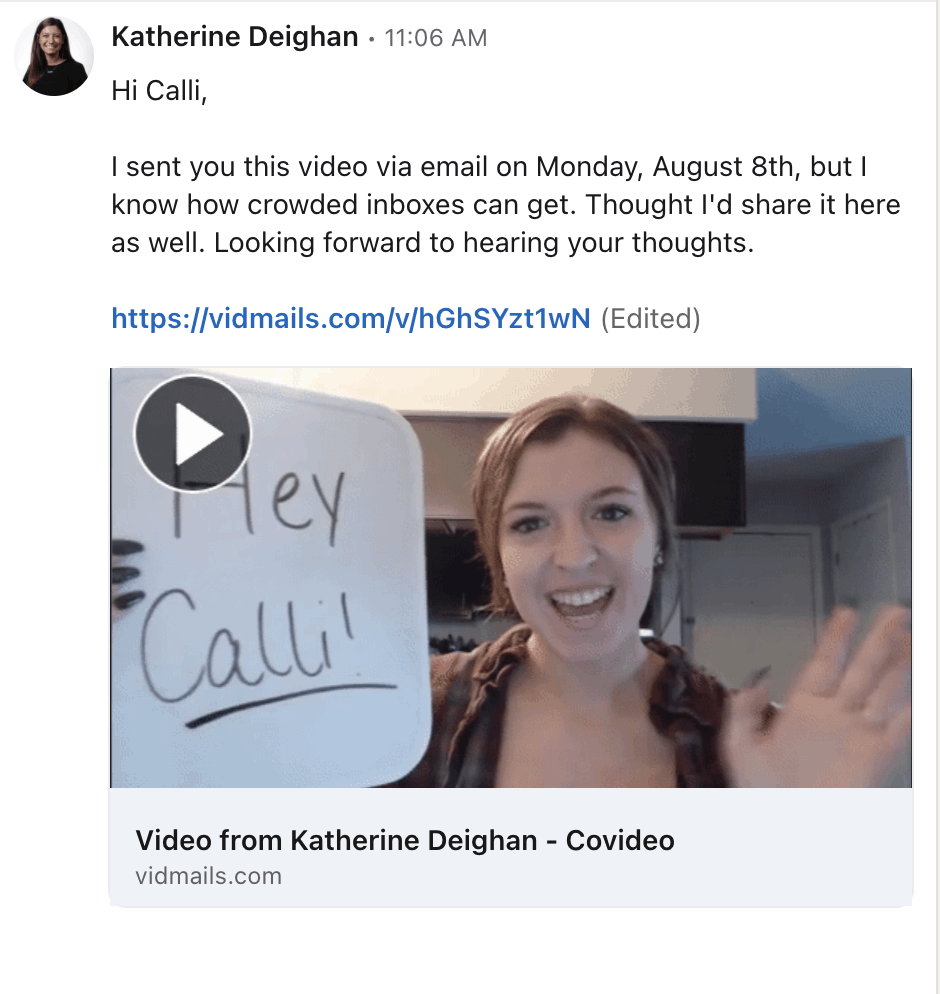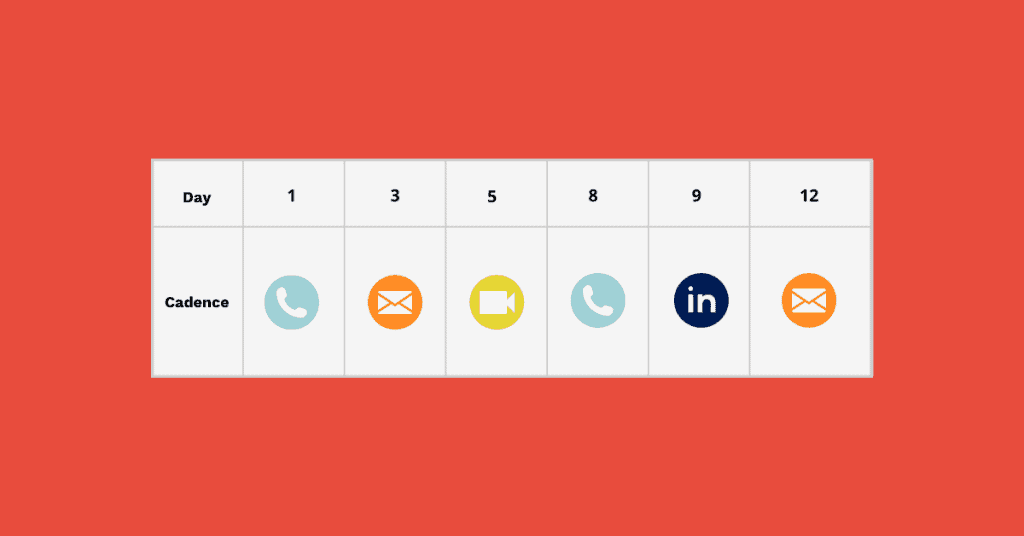Building an Effective Sales Cadence: What, Why, and How
Sales is the backbone of any business, which is why it’s so important to give a lot of time and effort into planning and creating strategies that give the best results. Believe it or not, most sales reps don’t have a sales cadence plan or strategy in place to keep up with their prospects and leads. Typically they follow up only two times. Don’t let that be you!
Beat out your competitors by creating a sales cadence that keeps you on track to follow up with your lead multiple times without being overbearing. To help you come up with your best strategy, we will show you how to build a sales cadence for prospecting and sales cadence examples. If you are asking yourself what is a sales cadence? Or why do you need B2B sales cadence? No worries – we’ll be answering those questions too.
What is a sales cadence?
A sales cadence is a sequence of points of contact with a prospect or lead. It starts with that first initial contact and goes until they either convert into a sales op, exit intentionally, or complete the full cadence without contact and is bucketed for later contact. Follow ups are filled in between start and finish. It helps keep reps on track with their outbound prospecting tasks. It can be done in the form of an email cadence, phone, or a mix of both. Most B2B sales cadences, and even B2C, have a mixture of phone calls and emails.
But why do you need a sales cadence?
To be more effective in your outreach!
A cold email cadence keeps your leads moving through the sales funnel while preventing them from getting stuck. A sales follow up cadence makes sure that your sales reps don’t allow any prospects to slip through the cracks. It keeps your business out in front and on the ball. Remember, it’s not a one size fits all type of approach – some prospects may prefer emails over phone calls, or vice versa. That is why it’s important to have an email cadence mixed with a sales call cadence and even social media touch points.
How to build a sales cadence – 5 best practices
First, create a cadence strategy. But be careful! There are a lot of components to consider and if it’s not structured correctly, you can lose leads by being too annoying. Using a sales cadence builder, like a CRM, can prevent your sales reps from appearing too clingy and help close more deals. These 5 best practices for sales cadence can help your sales team win more:
1. Narrow in on a target audience
Don’t waste your team’s time or the prospect’s time by trying to sell to the wrong audience. Take your time in gathering an appropriate list, finding their pain points, and how you can add value to their operations.
2. Timing is key
Like the saying goes, timing is everything. Determining the time of day of when you reach out will be through trial and error. As you contact them more, you will get a better understanding of when the best and worst times are to reach them. The time between touchpoints is crucial. You don’t want to reach out too many times to where you seem spammy or get ignored. Put at least a day in between each attempt of contact and only increase as they go farther through your cadence. The duration of your cadence should stay around 2 – 4 weeks total. Use a cadence sales tool to make it easier to manage this.
3. Consider number of touchpoints
This will look different as you go, but a general rule of thumb to follow is anywhere between 7-12. It takes, on average, 7 touch points for someone to buy something. Once or twice of following up is just not enough; people are busy.
4. Reach out on various channels
As mentioned above, a one size fits all approach will not lead to success. The same goes for your outreach methods and channels you use. Some people may be easier to reach by phone, whereas email may be more accessible for someone else. Every prospect, industry, and business is different so it’s best to add some variety to your sales cadence. Therefore, a well-diverse sales cadence should include emails, video emails, phone calls, voicemails, and even LinkedIn messages.
5. Create quality content
Quality is equally important as quantity when creating sales cadence. This step may be one of the most important out of the 5 and can only be done after the target audience has been identified. Cater the content to how your solution can provide value to their lives and build that relationship with them.
Sales cadence examples
Here is an example of what an outbound cadence might look like. Keep in mind this will vary based on industry, size of lead list, product/investment, etc. Sales is an art, not a science. If all that was required was an exact formula, we’d all be studying the playbook. But I hope this helps to serve as a starting point for your contact!
Sample outbound sales cadence
Touch #1 – Phone call and voicemail
Touch #2 – Personalized video email with Covideo
A sales video is a great way to stand out in the inbox, increase engagement, and accelerate the sales cycle. Sales videos are one-off messages recorded for individuals or small groups, which makes your outreach more personal, allows you to humanize the sales process, and gives you a better opportunity to build trust and rapport. We’ve included a sample video message and an example script to get you started.
Hi, [Lead Name] –
[Name] here with [Company]. I’m following up on the voicemail I left you to put a face with a name.
I’m reaching out because I work with people like you, helping them to (ABC) and find some (savings,efficiencies, etc.) by doing (ZYX).
If this is something you struggle with, let’s set up a short call to discover if I might be able to help you out – maybe make your life a little easier.
I’ve suggested some times in the body of my email – let me know what works best and I’ll send you a calendar invite.
If I don’t hear from you by X date, I’ll be giving you a call on X date.
Talk soon!
Touch #3 – Second phone call, no voicemail
Touch #4 – Plain text email with “give”
What’s a give? A give is a small offering. Whether that be a free consultation, add-ons, an example case study, a discount code, you name it. When you give, the prospect feels a sense of obligation to give something back in return – whether that be their time, money, or even just a response.
Touch #5 – LinkedIn connection (just add with NO message)
Touch #6 – LinkedIn message
After your lead accepts your invite, message them with a short video. If you never received a response from your first video, feel free to reuse that original Covideo message from your previous email along with this message:
Hi, [Lead Name] –
I sent you this video via email on X date, but I know how crowded inboxes can get. Thought I’d share it here as well. Looking forward to hearing your thoughts.

Touch #7 – Plain-text follow-up email
For advice on how to write a banger follow-up email, read our articles on sales follow-up emails and how to craft a follow-up email after no response.
Touch #8 – Third phone call + voicemail
Touch #9 – Break up email
This is your final shot – feel free to add a bit of personality, or try something different here. At this point, you’ve got nothing to lose.
Now, it’s your turn
Take what you learned today and create your own sales cadence. Start a free trial of Covideo!





